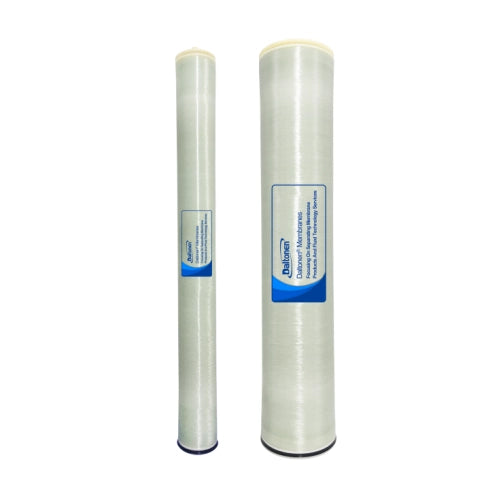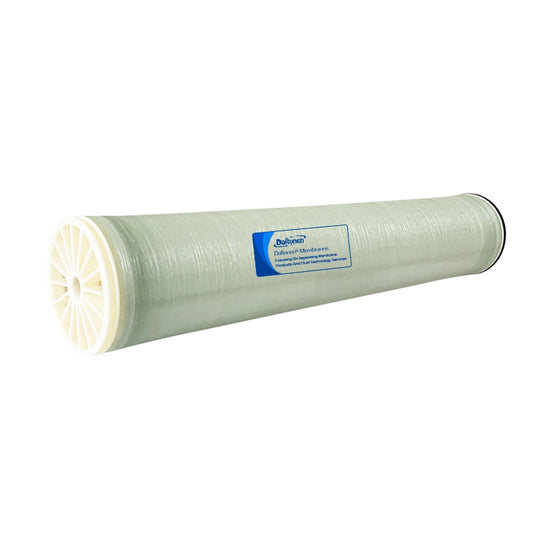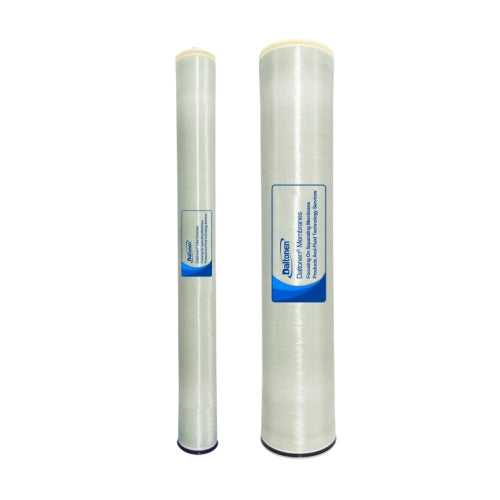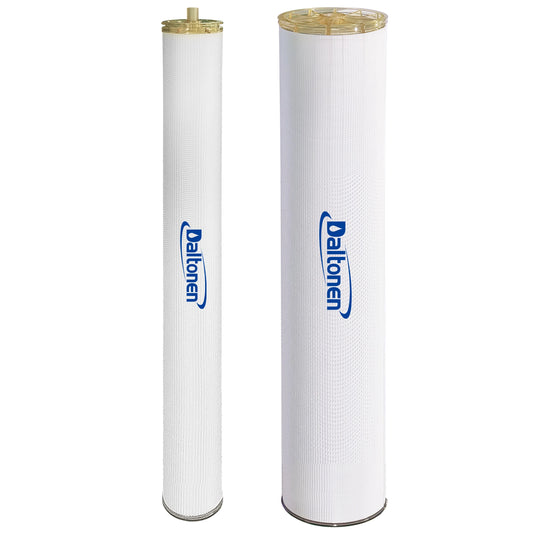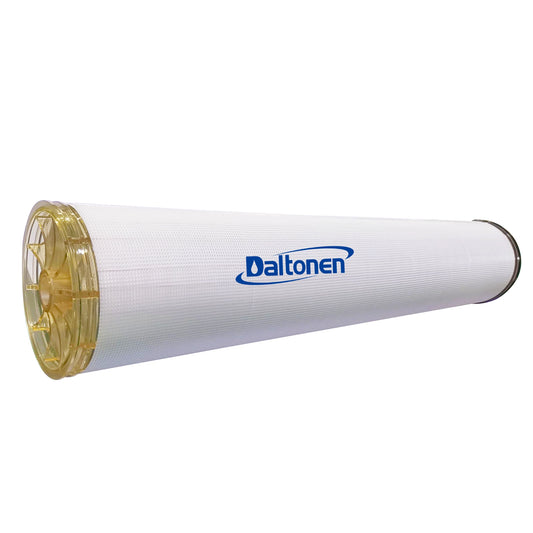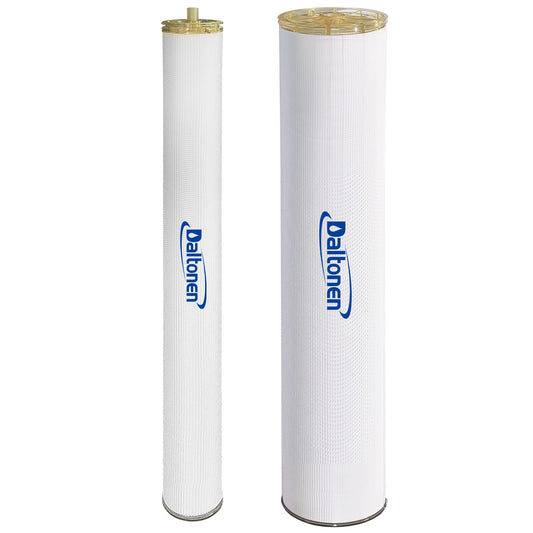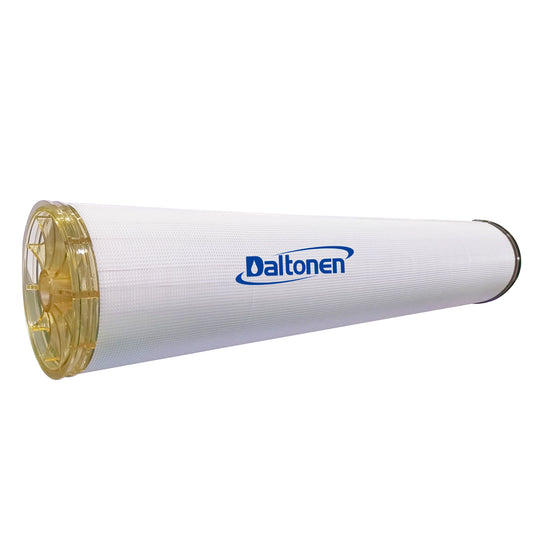Advantages and Disadvantages of Nanofiltration Concentration Process for Natural Soda Water
04 Jun 2025
1. Advantages of Nanofiltration Concentration Process
1.1 Efficient Removal of Impurities
The nanofiltration concentration process demonstrates significant efficiency in removing impurities from natural soda water. With pore sizes between those of reverse osmosis and ultrafiltration membranes, nanofiltration membranes can effectively retain calcium, magnesium, and other divalent ions, as well as some organic substances and microorganisms in the water. Research indicates that the removal rate of divalent ions in water by nanofiltration can reach over 90%, and the removal rate of organic matter exceeds 80%. For instance, in a natural soda water treatment plant that adopted the nanofiltration process, the concentration of calcium ions in the water was reduced from 200 mg/L to 20 mg/L, and the concentration of magnesium ions was reduced from 150 mg/L to 15 mg/L, significantly enhancing the purity of the water.
1.2 Energy and Environmental Conservation
The nanofiltration concentration process offers notable energy-saving advantages in the treatment of natural soda water. Compared to traditional thermal concentration processes, nanofiltration operates at ambient temperature, eliminating the need for substantial thermal energy consumption. The energy consumption in the nanofiltration process primarily comes from the driving of pumps, with unit energy consumption being only 1/5 of that of traditional thermal concentration processes. Moreover, the process does not generate large amounts of waste residue and wastewater during treatment, reducing environmental pollution. For example, a natural soda water production enterprise that adopted the nanofiltration process was able to save approximately 30% on energy costs annually and reduce wastewater discharge by about 50%.
1.3 Retention of Beneficial Components
While removing impurities, the nanofiltration concentration process can effectively retain beneficial components in natural soda water. With a relatively low retention rate for monovalent ions, nanofiltration membranes allow most beneficial components such as sodium ions to be retained in the water. Research shows that the retention rate of sodium ions in natural soda water treated by nanofiltration can reach over 85%. Additionally, the process also has a good retention effect on dissolved carbon dioxide and other gaseous components in the water, which contribute to the unique taste of natural soda water. For example, a brand of natural soda water that adopted the nanofiltration process saw a 15% increase in taste rating compared to traditional treatment methods, receiving widespread consumer approval.

2. Disadvantages of Nanofiltration Concentration Process
2.1 Membrane Fouling and Blockage
Membrane fouling and blockage are common issues in the treatment of natural soda water using the nanofiltration concentration process. With small pore sizes, nanofiltration membranes are prone to blockage by organic substances, microorganisms, colloidal particles, and other materials in the water. Research indicates that when treating natural soda water with a high concentration of organic matter, the membrane flux of nanofiltration can decrease by 30%-50% after one month of operation. For example, in the initial stage of adopting the nanofiltration process at a natural soda water treatment plant, the membrane flux was 50 L/(m²·h), but after three months of operation, it dropped to 30 L/(m²·h), resulting in reduced treatment efficiency. To address membrane fouling, regular chemical cleaning is necessary, which not only increases maintenance costs but may also negatively impact the performance of the membrane. The acids, bases, and other chemical reagents used in the cleaning process can corrode the material of the nanofiltration membrane, reducing its lifespan.
2.2 High Cost Investment
The equipment investment and operating costs of the nanofiltration concentration process are relatively high. The manufacturing process of nanofiltration membranes is complex and expensive, accounting for 40%-60% of the total equipment investment. For example, the cost of nanofiltration membrane components for a nanofiltration concentration device with a treatment capacity of 1000 m³/d is about 750,000 USD. In addition, the operation of the nanofiltration process requires a significant amount of electricity to drive the pumps, although its energy consumption is lower than that of traditional thermal concentration processes, the long-term operation still incurs higher energy costs. A natural soda water production enterprise that adopted the nanofiltration process saw an increase of about 300,000 USD in equipment investment and an annual increase of about 75,000 USD in operating costs. Moreover, the replacement cost of nanofiltration membranes is also high, generally requiring replacement every 3-5 years, with replacement costs accounting for about 30% of the total equipment investment.
2.3 Strict Operating Conditions
The nanofiltration concentration process has strict requirements for operating conditions. The performance of nanofiltration membranes is significantly affected by factors such as temperature, pressure, and pH value. Research shows that for every 10℃ increase in temperature, the flux of nanofiltration membranes can increase by 10%-20%, but excessively high temperatures may lead to thermal degradation of the membrane material. Pressure also has a significant impact on the flux of nanofiltration membranes, but too high pressure may cause membrane compaction, thereby reducing the flux. In addition, pH value also has an important impact on the performance of nanofiltration membranes, generally requiring the influent pH value to be between 6 and 8. In actual operation, these parameters need to be strictly controlled to ensure the stable operation of the nanofiltration process. For example, a natural soda water treatment plant experienced a decrease in membrane flux and treatment efficiency due to failure to strictly control the influent pH value. Moreover, the operation of the nanofiltration process requires professional technical personnel for maintenance and management, which increases the operating costs of enterprises.
3. Summary
The nanofiltration concentration process has significant advantages and disadvantages in the treatment of natural soda water. On the one hand, the process can efficiently remove impurities from water, such as calcium, magnesium, and other divalent ions, as well as organic matter and microorganisms, significantly improving the purity of the water. At the same time, the process operates at ambient temperature, with low energy consumption and no generation of large amounts of waste residue and wastewater, offering significant energy-saving and environmental protection benefits. In addition, while removing impurities, the process can effectively retain beneficial components in natural soda water, such as sodium ions and dissolved carbon dioxide, thereby giving the product a unique taste.
On the other hand, the process also has some disadvantages. Membrane fouling and blockage are common problems that not only reduce treatment efficiency but also increase maintenance costs. Moreover, the equipment investment and operating costs of the nanofiltration concentration process are relatively high. The manufacturing process of nanofiltration membranes is complex and expensive, accounting for 40%-60% of the total equipment investment. At the same time, the process has strict requirements for operating conditions and needs to strictly control parameters such as temperature, pressure, and pH value to ensure stable process operation.
In conclusion, the nanofiltration concentration process has significant advantages in the treatment of natural soda water but also faces some challenges. When enterprises choose this process, they need to comprehensively consider its advantages and disadvantages, weigh costs and benefits, and achieve efficient, environmentally friendly, and high-quality production of natural soda water.
Tags:
